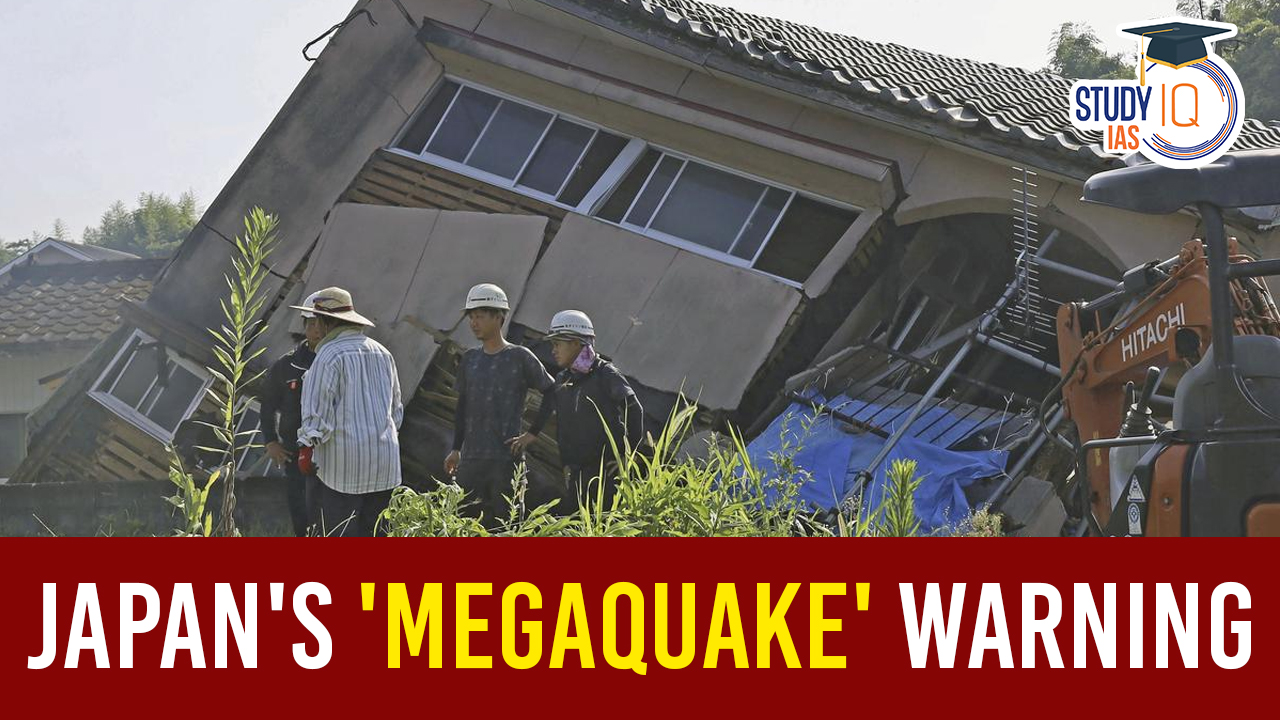Table of Contents
Context: Japan’s meteorological agency issued its first-ever Megaquake advisory.
Nankai Trough Zone
- It is a 900 km long underwater subduction zone where the Eurasian Plate collides with the Philippines sea plate pushing the latter under the former and into the Earth’s mantle.
- It lies in the Pacific Ocean
- Location: It runs from Shizuoka, west of Tokyo, to the southern tip of Kyushu Island.
| Key Concepts |
|
Basics of Earthquake
- An earthquake is the shaking of the surface of the Earth, resulting from the sudden release of energy in the Earth‘s lithosphere that creates seismic waves.
- It may be due to faulting, folding, plate movement, volcanic eruptions and anthropogenic factors like dams and reservoirs.
- The point within Earth where faulting begins is the focus or hypocenter.
- The point directly above the focus on the surface is the
- The intensity of the earthquake is highest at the epicentre and decreases with distance from the epicentre.
- Richter scale is the scale to measure the magnitude of energy released by an earthquake.
- The number indicating magnitude ranges between 0 to 9
- Mercalli scale is a seismic scale used to measure the intensity of an earthquake.
- The number indicating intensity ranges between 1 to 12.
Seismic Waves
- Seismic waves are the waves of energy caused by the sudden breaking of rock within the earth.
- They are the energy that travels through the earth and is recorded on seismographs.
- The two main types of waves are body waves and surface waves.
Body Waves
- Primary waves ( P-waves): These are the fastest seismic waves that can move through gaseous, solid rock and fluids, like water or the liquid layers of the earth. They are Longitudinal Waves.
- Secondary waves ( S-waves):
- It can only move through solid rock.
- S-waves arrive at the surface with some time Lag.
- These are Transverse waves.
Surface Waves
- Love Waves (L-waves)
- Rayleigh waves


 Bihar Assembly Election 2025 Dates, Poli...
Bihar Assembly Election 2025 Dates, Poli...
 Bharat Bandh 9 July 2025: Over 25 Crore ...
Bharat Bandh 9 July 2025: Over 25 Crore ...
 Sukhoi Su-57: Will India Choose Russia�...
Sukhoi Su-57: Will India Choose Russia�...





















